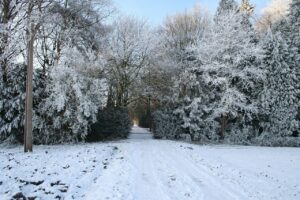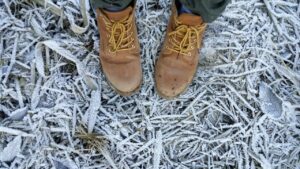The best grass’s for the winter months are:
Australian climates can bring vastly different temperatures across the year. Scorching hot summers and bitterly cold winters mean that lawns that will happily grow in January may not tolerate August.
The most common way to maintain a lush, green lawn year round is by pairing cool season grasses with warm season grasses. When the sun comes out and the days become longer and hotter, the warm season grasses spring into life while the cool season grasses lay dormant. Then, as the days grow colder and wetter, the warm season grasses take a break for the winter and the cool season grasses have their time to shine.
Which are the best lawn seeds for winter, you ask? Look no further. There are a range of options for cool season grasses and your lawn care specialist should be able to point you in the right direction if you’ve got some very unique conditions. On the whole, however, these five types of grass are the fail-safe, gold standard in winter lawn seeds.
Kentucky Bluegrass
Kentucky bluegrass is one of the nicest looking lawns going around. It’s that deep green, almost blue (hence the name), soft, squishy lawn that you just want to run your hand over.
When it comes to a cool-season grass for a backyard, it doesn’t get much better than this. It’s hard-wearing and traffic tolerant, which means that when you, the kids, and the pets can’t resist running around on it, it doesn’t mind at all.
Kentucky bluegrass tolerates really cold climates, like that of Tasmania and Victoria. It has no problem with shade or frost, battling through the hardest of winters. It’s also not bothered by drought, so if you’re in an area of Australia which will face bitterly cold yet dry winters, Kentucky bluegrass will still work for you.
RTF Tall Fescue
Tall fescue grasses have always been a staple lawn variety for cooler climes. Now, clever scientists have engineered a new variety – RTF Tall Fescue – which self-repairs. Not only does this address a lot of the drawbacks of original tall fescues, but now in the right conditions, it can also be a year-round lawn.
RTF Tall Fescue is resistant to frost, drought, and traffic. Over winter it will absolutely shine, giving you a beautiful lawn. If your yard provides shade over the summer months, you may find that your RTF Tall Fescue lawn stays healthy and vibrant. Too much direct sunlight, however, will not be tolerated and you may need a companion grass to keep your lawn up to standard over the hotter parts of the year.
Ryegrass Blend
Now, for the blends. Blends of seeds are often a sure-fire path to a thriving lawn. Each of the seeds contributes its own benefits, and where one seed might fail, the others will push through.
For cooler climates, a ryegrass blend of perennial and annual ryegrass (with a bit of fescue thrown in for good measure) will provide a great cover for your backyard or for a public space.
This blend will germinate quickly and is cheap as chips. It’s the best way to create a green space with limited time and money.
Ryegrass needs a lot of water though, so this is one for cold and wet winters.
Parks Blend
The Parks Blend is the ultimate mix of Kentucky bluegrass and tall fescue. Any lawn which will be put to the test with bitter winters and high traffic (whether that be pets, feet, or active children) will benefit from the Parks Blend.
This low-maintenance grass will withstand the harshest of winter conditions and still provide a lush, green, soft lawn for your family.
Elite Backyard Blend
The Elite Backyard Blend mixes ryegrasses and fescues to create a soft, hardy lawn that will, in most yards, stay vibrant all year round.
Any yards in the temperate areas of Australia will benefit from this blend, with its three seed types dealing with any condition it’s exposed to.
Buying a blend of seeds, such as the Elite Backyard Blend, means that you don’t have to go through the planting and establishing process for each season. It’s the ultimate for any gardening amateurs.
Plant once, and the seeds will work it out. The cool season ones will do their thing in winter, the warm season ones will come to the fore in summer, and you just get to sit back and enjoy your lawn year round without having to worry about what the weather will do to your lawn.



